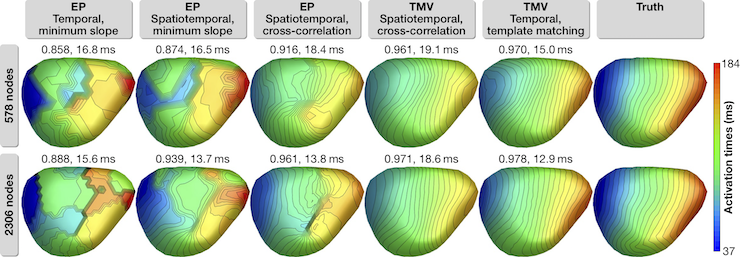Activation Times Estimation in ECG Imaging: Comparison of Source Models and Estimation Methods
- Typ:Masterarbeit
- Betreuung:
- Bearbeitung:
-
Activation times (AT) describe the sequence of cardiac depolarization and represent one of the most important parameters for analysis of cardiac electrical activity. However, estimation of ATs can be challenging due to multiple sources of noise such as fractionation or baseline wander. If ATs are estimated from signals reconstructed using electrocardiographic imaging (ECGI), additional problems can arise from over-smoothing or due to ambiguities in the inverse problem. Often, resulting AT maps show falsely homogeneous regions or artificial lines of conduction block. As ATs are not only important clinically, but are also commonly used for evaluation of ECGI methods, it is important to understand where these errors come from.
Preliminary work showed differences in the occurrence of artificial lines of block between ECGI-reconstructed extracellular potentials (EP) and transmembrane voltages (TMV) and between different methods for AT estimation. In this project, these differences shall be analyzed using simulations of ventricular activity and the reasons for artefacts in AT maps shall be identified. AT estimation methods shall be ranked with respect to suitable error metrics and, if possible, be optimized to reduce artefacts.

